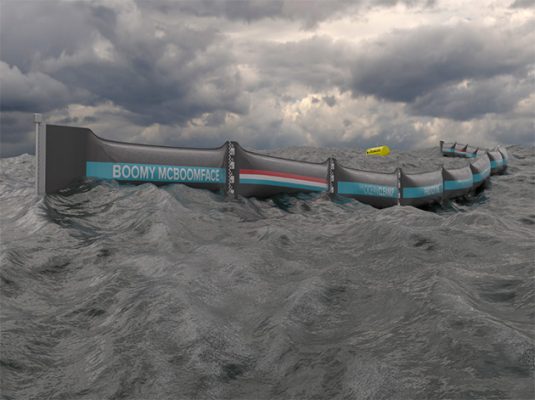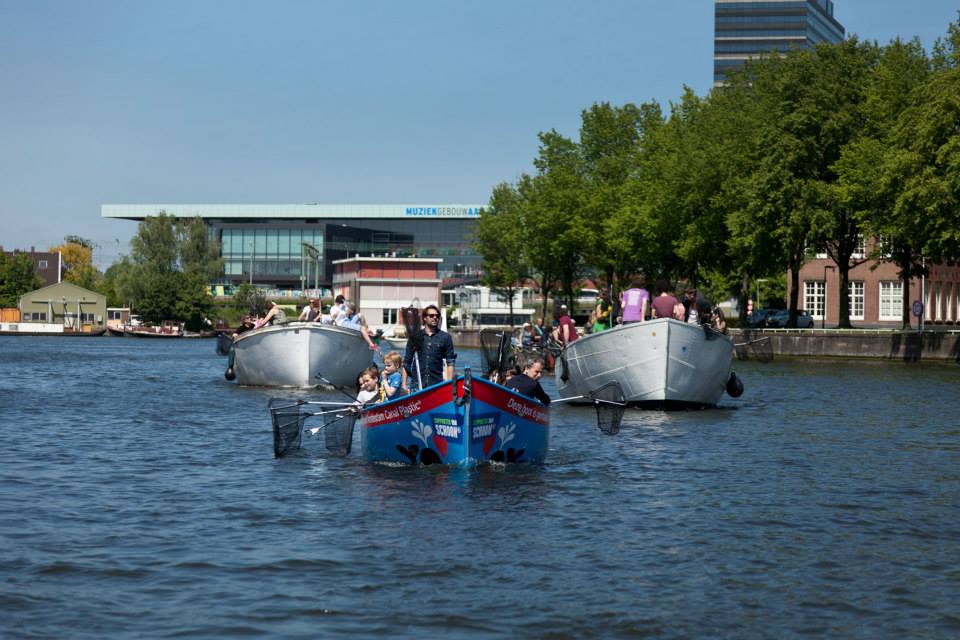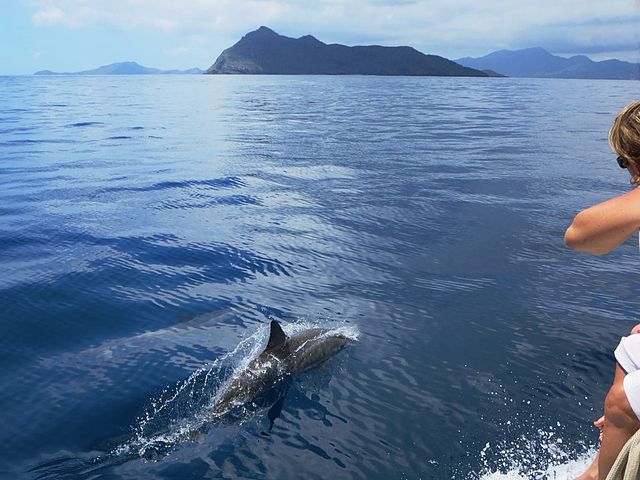Ambitious plans to rid the world's oceans of plastic have now moved forward as the Ocean Cleanup unveil its first prototype to be tested at sea.
The Dutch foundation, The Ocean Cleanup, has deployed its prototype 100-metre clean-up boom in the North Sea.
Positioned 12 nautical miles off the Dutch coast, it will be in place for a year.
The first sea trial of this ocean cleanup system will test how well the boom copes in extreme weather.
These will be similar to the conditions the system will eventually face when deployed in the Great Pacific Garbage Patch – a gyre of plastic and other marine debris in the central North Pacific Ocean.
The prototype’s unveiling was witnessed by two of The Ocean Cleanup’s main partners, the Dutch government, and the dredging and marine contractor Royal Boskalis Westminster N.V.

The launch of the new prototype
Throughout the year, sensors will track every motion of the prototype and the loads it is subjected to.
The data gathered will enable engineers to develop a system fully resistant to severe conditions.
At the North Sea test site, conditions during a minor storm are more severe than those in exceptionally heavy storms (occurring once every 100 years) in the Pacific Ocean.
The Ocean Cleanup’s cleaning technology makes use of long floating barriers which act as an artificial coastline, passively catching and concentrating ocean debris.
It is powered by the ocean’s natural currents.
The CEO and 21-year-old founder of The Ocean Cleanup, Boyan Slat, said: “This is a historic day on the path toward clean oceans. A successful outcome of this test should put us on track to deploy the first operational pilot system in late 2017.”
He also noted that a successful test does not necessarily mean the prototype will survive.

Boyan Slat
“I estimate there is a 30% chance the system will break, but either way it will be a good test,” said Slat.
The Dutch government described the Ocean Cleanup as “an inspiring example” of how plastic and other ocean pollution can be tackled.
Dutch Environment Minister Sharon Dijksma said: “hope that with the help of the Dutch government, Boyan’s prototype will turn out to be the successful solution for cleaning up the mid-ocean gyres.”
“This is crucial to prevent permanent damage to the environment and marine life, due to the degradation and fragmentation of plastic waste materials,” continued the minister.
‘Plastic fishing’ company builds boats from bottles to fight pollution
An social enterprise group called Plastic Whale has entered the boat building business with six boats built from plastic 'fished'…
Video: Startup aims to clean up water pollution at marinas
A technology startup has raised the funds it needs to produce a water-based trash bin that aims to stop water…
Eco-friendly sailing: enjoy your favourite sport and respect nature
As sailors and boaters, we have a responsibility to treat the environment with respect. Following these guidelines is good environmental…
Concept for zero emissions cargo ship unveiled
The Fair Winds Trading Company is in the research and design stage of the project. A model of the cargo…







